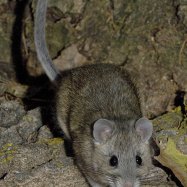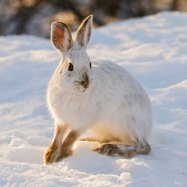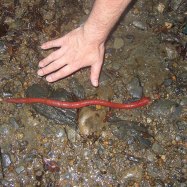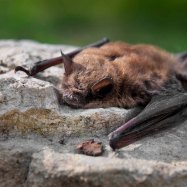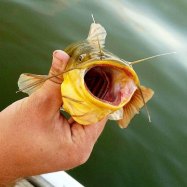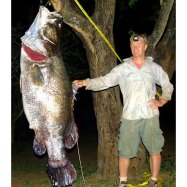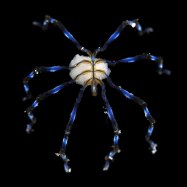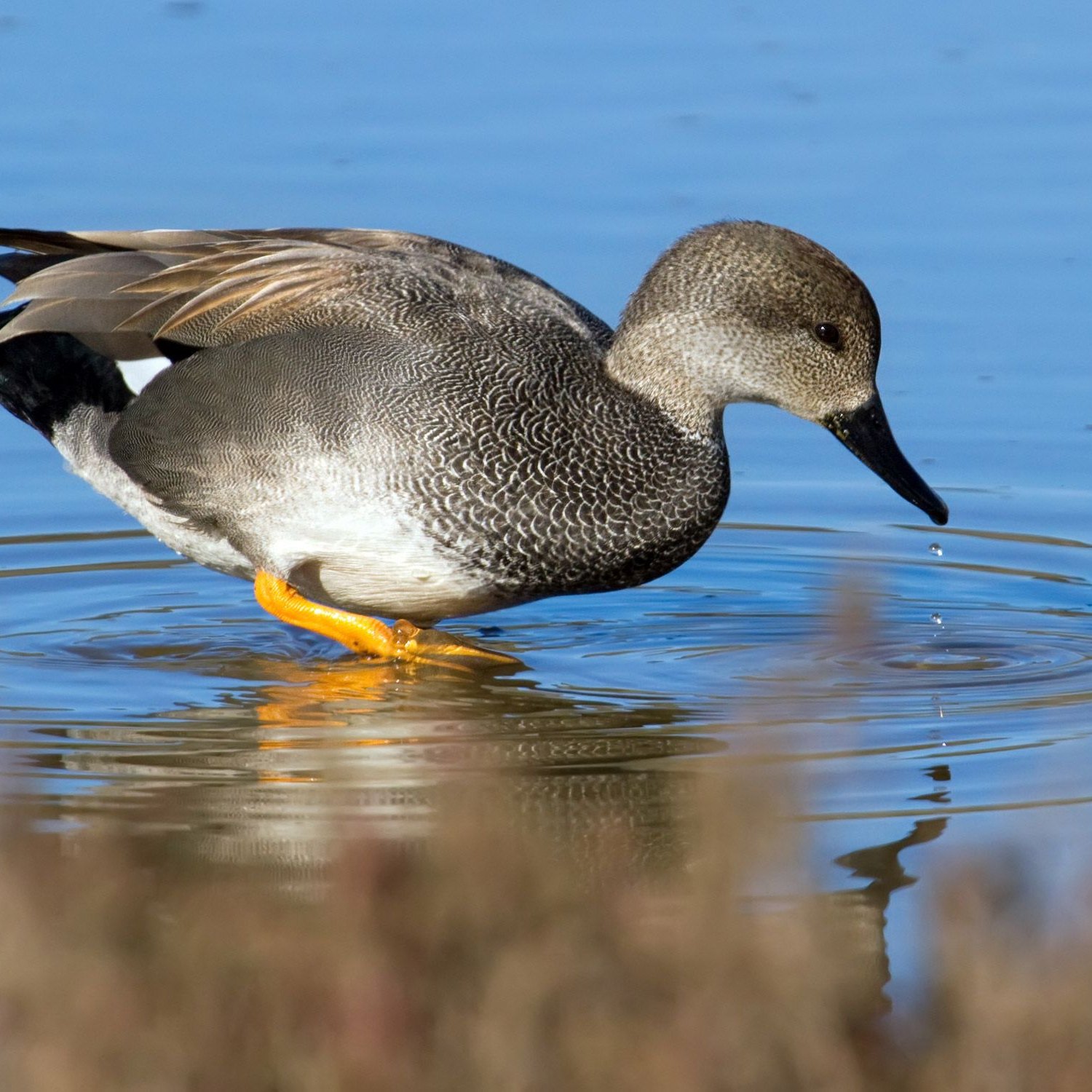
Gadwall
46-56 cm (18-22 inches)
The Gadwall, a medium-sized dabbling duck found in Europe, Asia, and North America, is known for its stunningly patterned feathers and adaptable nature. With a body length of 46-56 cm, they can be found in various habitats, from lakes to wetlands. Belonging to the Anatidae family, these ducks are a must-see for any wildlife lover. #Gadwall #duck #wildlife #anatidae
Animal Details Summary:
Common Name: Gadwall
Kingdom: Animalia
Habitat: Wetlands, lakes, ponds, marshes
The Marvelous Gadwall: A Versatile and Adaptable Dabbling Duck
As nature lovers, we are constantly amazed by the diversity and adaptability of the animal kingdom. Every species seems to have its unique charm and fascinating characteristics that capture our attention and leave us in awe. One such incredible creature is the Gadwall, also known by its scientific name Mareca strepera, a medium-sized dabbling duck found in wetlands and lakes across Europe, Asia, and North America.Gadwalls have a long history of coexisting with humans, and their ability to adapt to different environments has enabled them to thrive in varying habitats Gadwall. Despite facing challenges such as habitat loss and climate change, Gadwalls continue to amaze researchers and birdwatchers alike with their mesmerizing behavior and remarkable features. In this article, we delve into the world of the Gadwall, exploring its habitat, feeding methods, distribution, and unique characteristics. So, let's put on our binoculars and dive into the world of this versatile and adaptable dabbling duck.
A Bird from the Northern Hemisphere
Gadwalls are classified under the Kingdom Animalia, Phylum Chordata, Class Aves, Order Anseriformes, Family Anatidae. They are a common dabbling duck species found in wetlands, lakes, and ponds across the Northern Hemisphere. These birds are incredibly adaptive, which allows them to thrive in a wide range of habitats, from freshwater lakes to brackish marshes. They have a diverse diet, allowing them to survive in different environments, unlike some more specialized duck species.Native to Europe, Asia, and North America, Gadwalls have a wide distribution range and can be found in almost all suitable habitats within these regions. In North America, they are most commonly found during the breeding season in the prairies and western plains, while they move to the southern United States and Mexico in the winter Grebe. In Europe, their breeding grounds range from the UK to Russia, while they migrate towards southern and western Europe in the winter. In Asia, they breed in Russia, China, and Japan, and migrate towards southern and eastern regions in the winters.
A Versatile and Adaptable Habitat
Gadwalls are highly adaptable birds that can thrive in a variety of wetland habitats. These ducks prefer shallow, freshwater habitats that provide them with easy access to their food sources. However, they can also be found in more brackish environments, such as coastal marshes and estuaries, as well as in agricultural fields and flooded grasslands.Their ability to thrive in various habitats is due to their flexible foraging behavior and their unique feeding methods. Gadwalls typically feed by dabbling, where they upend their bodies in shallow water and filter feed on insects, seeds, and plant matter. This type of feeding is particularly useful when the water level is shallow, and the food sources are abundant. In deeper water, Gadwalls employ their filter-feeding technique, where they swim on the surface and feed on aquatic invertebrates and small organisms.
So Much More than "Just Another" Duck
At first glance, Gadwalls may seem like just another duck species, but a closer look reveals their unique and remarkable features. For starters, Gadwalls have beautiful and distinctive coloration. The males have a brown body with a gray head, and a striking black rear end, making them stand out amongst other duck species. They also have a small, white patch on their wing, which is particularly visible during flight. On the other hand, the females are mottled brown, making them well camouflaged in their natural habitats, especially during the breeding season.In addition to their striking appearance, Gadwalls have a wid

Gadwall
Animal Details Gadwall - Scientific Name: Mareca strepera
- Category: Animals G
- Scientific Name: Mareca strepera
- Common Name: Gadwall
- Kingdom: Animalia
- Phylum: Chordata
- Class: Aves
- Order: Anseriformes
- Family: Anatidae
- Habitat: Wetlands, lakes, ponds, marshes
- Feeding Method: Dabbling, filter feeding
- Geographical Distribution: Europe, Asia, North America
- Country of Origin: Northern Hemisphere
- Location: Wide range of habitats in Europe, Asia, and North America
- Animal Coloration: Males: brown with a gray head and black rear end, Females: mottled brown
- Body Shape: Medium-sized dabbling duck
- Length: 46-56 cm (18-22 inches)
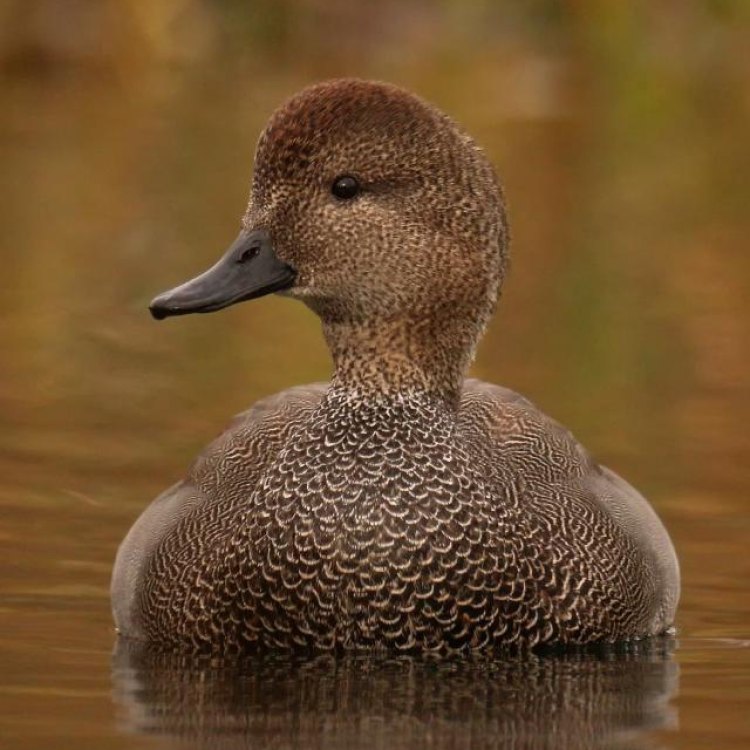
Gadwall
- Adult Size: Medium
- Average Lifespan: Up to 12 years
- Reproduction: Mate selection, nest building, egg-laying
- Reproductive Behavior: Monogamous
- Sound or Call: Males produce a series of whistling notes
- Migration Pattern: Migratory
- Social Groups: Flocks
- Behavior: Sociable and non-aggressive
- Threats: Habitat loss, pollution, hunting
- Conservation Status: Least Concern
- Impact on Ecosystem: Contributes to wetland and aquatic ecosystems through feeding and nesting
- Human Use: Hunting, birdwatching
- Distinctive Features: White belly, black and white patches on wings, gray bill with black tip
- Interesting Facts: The Gadwall is known for its distinctive posture, often referred to as the "Gadwall hunch."
- Predator: Various bird species and mammals
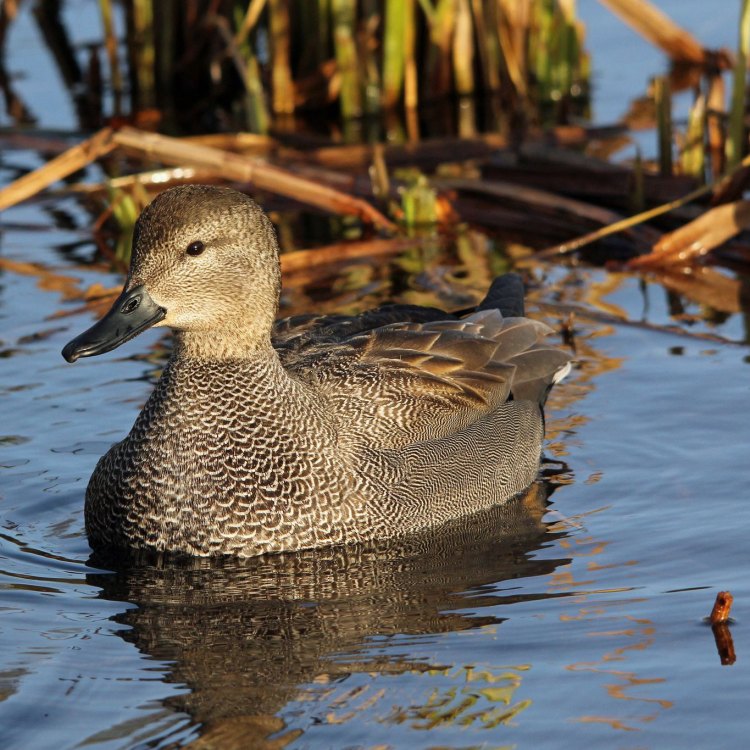
Mareca strepera
Gadwall: The Fascinating Waterfowl Species
When you think of waterfowl, you might picture a graceful swan or a majestic duck. However, there is one species that often gets overlooked due to its simple appearance – the Gadwall. This medium-sized bird may not catch your eye at first glance, but its unique features and behavior make it an integral part of wetland and aquatic ecosystems.So who exactly is the Gadwall and what makes it special? In this article, we dive into the world of this unassuming yet fascinating waterbird, exploring its characteristics, behavior, role in the ecosystem, and more PeaceOfAnimals.Com.
The Basics: Size, Lifespan, and Reproduction
The Gadwall, scientific name Mareca strepera, belongs to the Anatidae family, along with ducks, geese, and swans. It is considered a medium-sized bird, with adults reaching an average length of 19-22 inches and weight of around 1.5 pounds. Its wingspan can range from 30-33 inches, making it comparable to a mallard in size.In the wild, Gadwalls can live up to 12 years, with some individuals reaching the age of 15. As with most birds, their lifespan may be shorter in captivity due to various factors such as diet and stress.
When it comes to reproduction, Gadwalls follow a similar pattern to other waterfowl. They engage in mate selection through courtship displays, with males showcasing their brightly colored feathers and vocalization skills to attract a female. Once a pair forms, they will engage in nest building, usually in grassy areas near water bodies Gooty Sapphire Tarantula.
In the breeding season, a female can lay an average of 9-12 eggs, which she will incubate for around 26 days. The hatchlings are precocial, meaning they are mobile and can feed themselves soon after hatching. They will stay with their parents for several weeks, receiving protection and guidance until they are ready to fledge.
The Sociable and Unique Behavior of Gadwalls
Unlike some waterfowl species that are known for their territorial and aggressive behavior, Gadwalls are quite sociable and non-aggressive. They often gather in flocks, especially during their migration to their breeding grounds in the north. These flocks can consist of a few individuals to hundreds, with a mix of males and females.Aside from their social behavior, Gadwalls are also known for their interesting reproductive behavior – they are monogamous. Once a pair has formed, they will usually stay together for one breeding season, and may even re-pair in the following years. This monogamous behavior is not commonly seen among waterfowl species, making it a unique feature of Gadwalls.
When it comes to communication, Gadwalls also have a distinct way of vocalizing. Males produce a series of whistling notes, while females have a lower, hoarser sound. These calls are used for communication within their flock, as well as during courtship displays.
Migratory Habits and Impact on Ecosystems
Gadwalls are migratory birds, meaning they move from one region to another in search of suitable breeding or feeding grounds. They are found in North America, Europe, and Asia, and have been recorded to travel up to 2,300 miles during their migration. In North America, they usually breed in the northern prairies and Canada, and migrate south in winter to the southern United States and Mexico.The role of Gadwalls in the ecosystem is significant, contributing to the health and balance of wetland and aquatic environments. As omnivores, they feed on a variety of plant matter, aquatic invertebrates, and insects, helping to control their populations. They also play a role in seed dispersal and nutrient cycling, contributing to the overall health of the wetland habitat.
In addition, Gadwalls are also important in the breeding season as they help to create and maintain wetland habitats through their feeding and nesting behavior. By foraging on aquatic plants and insects, they create openings and channels in the water, allowing sunlight and oxygen to reach deeper areas, which benefits other species in the ecosystem.
However, like many other waterfowl species, Gadwalls are facing threats to their survival due to human activities. Habitat loss, pollution, and hunting are some of the major threats that these birds face. Wetland destruction and contamination of water bodies can impact their food sources and nesting habitats, while hunting affects their population numbers.
Distinctive Features and Interesting Facts
While Gadwalls may not have the striking colors of other waterfowl species, they still have some distinct features that make them easily recognizable. One of the most noticeable features is their white belly, which contrasts with their dark brown or grayish bodies. They also have black and white patches on their wings, giving them a unique appearance in flight.Another interesting feature of the Gadwall is its distinctive posture, often referred to as the "Gadwall hunch." This is caused by the bird sitting low in the water, with its head tucked in, giving it a humpbacked appearance. This posture is thought to be a way for the bird to protect itself from predators, as well as to conserve energy while resting.
It's also worth mentioning that the Gadwall has been a favorite among hunters for centuries due to its delicious and tender meat. In fact, it is still one of the most harvested waterfowl species in North America. However, hunting regulations have been put in place to ensure sustainable harvest and conservation of the species.
Predators of the Gadwall
Despite its popularity among hunters, Gadwalls also face threats from other animals in the wild. Various bird species such as hawks, owls, and falcons may prey on their eggs and young. Larger birds such as gulls and eagles have been observed attacking adult Gadwalls. Mammals like foxes and coyotes may also pose a threat, especially to nesting females and young.However, the precise impact of these predators on the Gadwall population is not well-studied, and it is believed that the species has a relatively low predation rate.
Conclusion
In conclusion, the Gadwall may not have the flashy appearance of other waterfowl species, but its unique features, behavior, and role in the ecosystem make it a fascinating bird to learn about. From its social and monogamous behavior to its contribution to the health of wetlands and being a popular game bird, this medium-sized waterfowl has earned its place in the natural world. As with every species, it's important to understand and appreciate the Gadwall to protect and conserve it for generations to come.
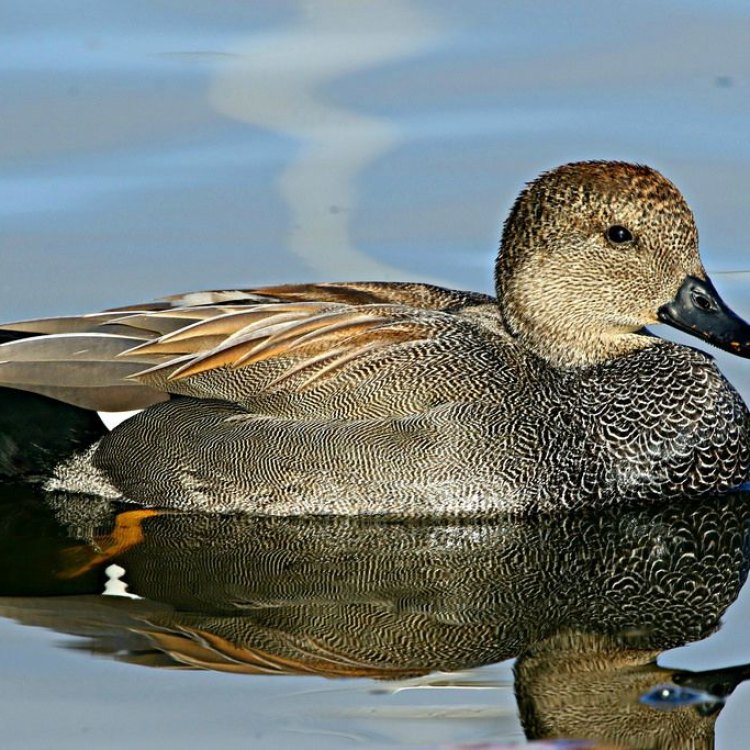
The Marvelous Gadwall: A Versatile and Adaptable Dabbling Duck
Disclaimer: The content provided is for informational purposes only. We cannot guarantee the accuracy of the information on this page 100%. All information provided here may change without prior notice.

